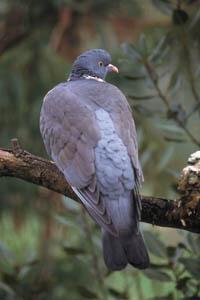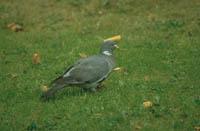State of the torcaz dove

Recent searches Census of Irati
In 1980 several groups of ecologists razed the Organbidexka hill to make dove-doves and "release" a hill on the path of doves. Therefore, the torcaz dove became very important, since until then it did not crawl through the beech. In fact, apart from Barriety's investigations, there was nothing.
The hunters were frightened because they considered that the results of these accounts would be used to restrict or prohibit the hunting of the dove, especially the counter-blade. Therefore, the hunting federation of the department of the Atlantic Pyrenees also began to count pigeons in Irati, a little higher than the ecologists. In addition, hunting federations from other departments of Aquitaine collaborated, resulting in further research on the Torcaz dove.
Although the stories were made by two different groups, both obtained similar results.
But the results are only those of the doves that pass in Irati. And what do the rest of the European populations consist of? Or at least the migrating populations? That is, does it mean that the decline observed in Irati for 15 years is decreasing the rest of the populations? This question cannot be answered, at least in Portugal and southern Spain, seeing that in winter doves are "thousands", although it is believed that their number is also decreasing. In France there are more and more doves to spend the winter, in the corn areas, and that has not been shown.
With all these doubts, in 1998 it was decided to make stories in the winter places, that is, in the French southwest, in Spain in the surroundings of Cáceres and Badajoz and in the south of Portugal. These stories will take place in January 2000.
About management
At the same time, studies have been conducted to establish an agile and precise method for monitoring migratory populations. At the moment, it has begun to measure the number of young people to know the dynamics of the populations and, therefore, assess whether the population is composed of old pigeons. But to do this, first we had to prepare a method to separate the pigeons from the rest of the year.
Methods to know age
Despite being such a hunchable bird, there were no reliable methods to know age. Therefore, studies have been initiated to take advantage of the fins to know the age, since the change of plumage is easy to follow in the cages in the seed pigeons and then, the hunters apply them with death pigeons without deteriorating the birds. In 1999, Frémaux published his thesis in collaboration with the hunters of Aquitaine. It explains the method to know the age of the doves of the year, following the renewal of them, specifically the renewal of the first lumens of rowing and stal-lumen.

Within the same study, in October 1998, in Aquitaine, an essay of this method was conducted with different ways of doing it: air, passage and networks. In all three cases, 70% of the payments were young. But Frémaux wanted to try another method, more reliable in arid, since with the lumen method, young people born early in form are implanted in the group of older. To do this, he has analyzed the degree of hardening of the skull, since the young of the year have a part of their soft skull, while the older ones do it very hard. Thus, the doves created in the morning are implanted in the juvenile group. With this second method, he has discovered that 90% are young years3.
About the future
During the 1999 hunting season it will be necessary to retest the skull method. If you notice that it is reliable and that 90% are young, several questions arise:
- hunting unifies only one kind of year?
- Can pigeons over the year not migrate?
- Do they once pass through the hills of the Pyrenees and learn to give cases in the coming years?
At the same time, the Faculty of Lisbon advances research to know and differentiate different populations through DNA and subsequently, at European level, to know and measure the problems of each population.
Irati's story goes on and this year there will also be groups to tell doves in Banka and Sara. In this way, it will be possible to check whether or not the migration passes to the western cervical areas.
There is still much to explain, and perhaps that bird holds a part of mystery for a long time. Although these investigations do not answer all the questions, I believe that thanks to this the world of hunting is discovering that the future of the storm is not assured.





